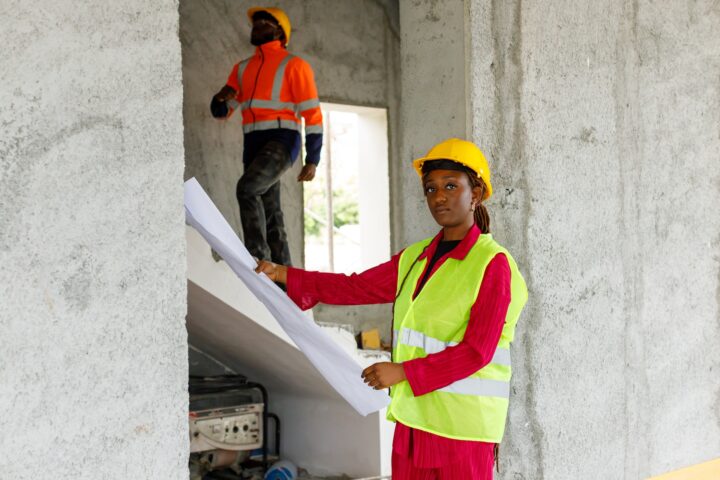What Are Some of the Deadliest Materials Used in Construction?
Buildings of all ages can potentially contain toxic or hazardous materials. Over time, a number of building materials and substances have been phased out of use in residential and commercial buildings for their adverse effects on human health. As an example, lead-based paints were banned for use in residential homes in 1978 due to their potentially lethal effects on anyone exposed to the substance for a significant time.
However, even newer homes and buildings may contain materials that are hazardous under certain circumstances. In this article, we discuss some of the most dangerous materials traditionally used in construction.

Lead
Lead is a neurotoxic heavy metal that is capable of negatively affecting development and brain function. Children are particularly vulnerable to adverse effects from even low amounts of exposure to lead, but adults can be harmed by this material as well. In construction, lead can be found in paints, plumbing, and roofing materials.
Lead-based paint is the most common cause of exposure in a residential setting. When the paint peels, chips, or cracks, lead dust occurs. Young children may accidentally ingest flaking paint chips or breathe in the dust, which can result in serious neurological damage.
Although lead-based paint was banned for use in residential buildings across the U.S. in 1978, older homes may still contain coatings. Homeowners or residents can get a lead paint risk assessment or inspection to determine whether there is lead paint in their home and how to safely eliminate or reduce exposure. It is always best to have the paint removed by qualified professionals, who have the skill and tools to handle the issue without increasing the risk to your loved ones.
Asbestos
Asbestos refers to a class of minerals that form strong fibers that were widely used in construction throughout the 20th century. Asbestos is particularly durable, insulating, and cheap, which made it something of a “miracle material” when its properties were first discovered. However, exposure to asbestos fibers can cause pleural disease, lung cancer, asbestosis, and mesothelioma.
People may breathe in asbestos fibers when natural deposits of the material as disturbed, such as during home renovations. One of the most notable incidents of a mass exposure to asbestos occurred during the 9/11 attacks. When the Twin Towers fell, a massive cloud containing asbestos dust, pulverized cement, lead, glass fibers, polychlorinated biphenyls (PCBs), and polycyclic aromatic hydrocarbons (PAHs) was released into the air. First responders and civilians in the vicinity that breathed in the dust suffered negative health effects ranging from cancer to interstitial lung disease.
Asbestos is no longer mined within the U.S., but the substance is not currently banned from use in building materials. The Environmental Protection Agency (EPA) issued the Asbestos Ban and Phase-Out Rule in 1989 to prohibit the use of the material, but the ban was overturned by the United States Court of Appeals for the Fifth Circuit in 1991. Despite still being used in the U.S., asbestos is banned in dozens of other countries across the world.
Cadmium
Cadmium is a toxic metal used in construction and manufacturing. It is used as an anti-corrosive and also makes up some industrial paints. Cadmium has also been used for electroplating, silver soldering, and the manufacturing of some solar cells and batteries.
Children are at particularly high risk of accidentally eating cadmium, which can severely irritate the stomach and cause diarrhea and vomiting. Prolonged exposure to cadmium dust, fumes, or soluble compounds can cause pneumonitis, pulmonary oedema, or even death. Cadmium is also considered a cancer-causing agent.
Volatile Organic Compounds (VOCs)
Volatile organic compounds (VOCs) are either compounds with a low boiling point. Many VOCs are human-created chemicals used to create varnishes, paint, caulking agents, thinners, and some types of adhesives. Even limited exposure to VOCs can cause headaches, eye or respiratory tract infections, memory impairment, dizziness, or visual disorders. Long-term exposure to these substances may cause:
- Loss of coordination and nausea
- Nose, eye, or throat irritation
- Damage to the central nervous system, kidney, or liver
Some VOCs are known to cause cancer in animals. It is possible that they are capable of causing cancer in humans as well.
Silica
Silica is a mineral found in materials such as granite, sand, and soil. It is frequently used in building products like blocks, mortar, rocks, bricks, stones, and concrete. Inhaling silica dust can have a number of adverse health consequences, from lung cancer to kidney disease.
Construction workers have the highest risk of exposure, as they may be exposed while using equipment such as jackhammers, drills, grinders, masonry saws, or while excavating. Homeowners or residents may also be exposed to dust disturbed during construction processes.
The National Association of Home Builders (NAHB) outlines steps needed to minimize exposure to silica dust for workers, in accordance with Occupational Safety and Health Administration (OSHA) standards. According to NAHB guidelines, there must be:
- A written control plan noting exposure factors and methods to protect workers
- A competent person implementing the aforementioned exposure control plan
- Limitations on practices that could cause silica exposure if reasonable alternatives are available
- Medical exams offered every three years for workers required to wear a respirator for 30 days or more annually
- Training for workers on how to limit exposure
- Diligent recordkeeping of employee medical exams and exposure rates
Protecting Yourself From Exposure to Hazardous Substances
Whether you’re a construction worker, a homeowner, or someone renting a property, it’s essential to be mindful of the materials going into the buildings that we dwell in. Particularly during renovations of older properties, the risk of encountering dangerous materials is quite high.
If you’re having renovations done, be sure to have the property inspected for hazards by qualified professionals before beginning the project. They will be able to identify any potential problems and create a plan that minimizes the risk of exposure to you, the members of your household, and the work teams themselves.


